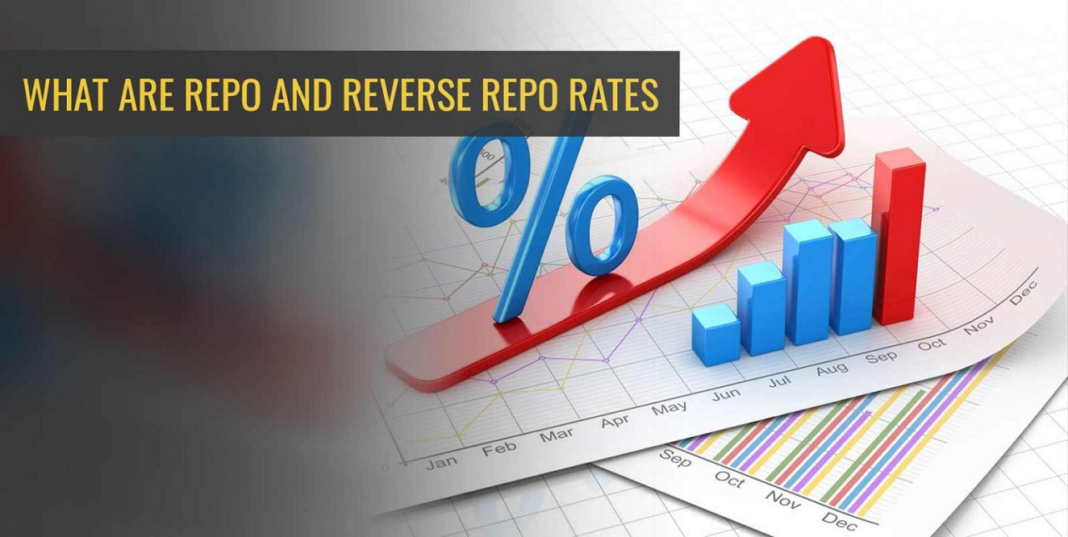The repo rate is the rate at which the Reserve Bank of India (RBI) lends money to commercial banks in the event of a shortfall of funds. Repo rate is used by monetary authorities as a tool to control inflation.
Reverse repo rate is the opposite of repo rate. It is the rate at which commercial banks lend money to the RBI. In other words, it is the rate at which RBI borrows money from commercial banks. The RBI uses this tool when it feels there is too much money floating in the banking system.

What is the repo rate?
The repo rate is the interest rate at which commercial banks can borrow money from the Reserve Bank of India (RBI). The RBI uses this tool to control inflation. When inflation is high, the RBI raises the repo rate to make borrowing more expensive for banks. This slows down the economy and reduces inflation.
When inflation is low, the RBI lowers the repo rate to make borrowing cheaper for banks. This stimulates the economy and increases inflation.
The reverse repo rate is the opposite of the repo rate. It is the interest rate at which commercial banks can lend money to the RBI. The RBI uses this tool to control liquidity in the banking system.
When there is too much liquidity in the system, the RBI raises the reverse repo rate to make lending money to the banks less attractive. This takes money out of circulation and reduces liquidity. When there is not enough liquidity in the system, the RBI lowersthe reverse repo rate to make lending money to banks more attractive. This puts more money into circulation and increases liquidity
What is the reverse repo rate?
When it comes to repo rate and reverse repo rate, the former is the interest rate at which the Reserve Bank of India (RBI) lends money to commercial banks, while the latter is the interest rate at which commercial banks can park their excess funds with RBI.
The RBI uses these rates as a tool to manage inflation and liquidity in the economy. A higher repo rate makes borrowing more expensive for banks, while a lower repo rate does the opposite. Similarly, a higher reverse repo rate encourages banks to park their excess funds with RBI, while a lower reverse repo rate discourages them from doing so.
In recent years, RBI has been cutting repo rates in an effort to boost economic growth. The current repo rate is 5.15%, while the reverse repo rate is 4.90%.
What is the difference between the repo rate and the reverse repo rate?
When it comes to the repo rate and the reverse repo rate, there is one key difference. The repo rate is the rate at which commercial banks can borrow money from the RBI, while the reverse repo rate is the rate at which commercial banks can lend money to the RBI. In other words, the repo rate is used when banks need to borrow money, while the reverse repo rate is used when banks have excess money that they want to deposit with the RBI.
How do the repo rate and the reverse repo rate affect the economy?
The repo rate is the interest rate at which the Reserve Bank of India (RBI) lends money to commercial banks. The RBI uses this tool to control the money supply in the economy. A higher repo rate means that commercial banks will have to pay a higher interest rate on any money they borrow from the RBI.
This, in turn, will make borrowing from the RBI less attractive for commercial banks. As a result, commercial banks will be more likely to lend money to customers instead of borrowing from the RBI. This will reduce the amount of money available in the economy and help to control inflation.
The reverse repo rate is the interest rate at which commercial banks can borrow money from the RBI. The RBI uses this tool to reduce the amount of money in circulation. A higher reverse repo rate means that commercial banks will earn a higher interest rate on any money they lend to the RBI.
This will make lending to the RBI more attractive for commercial banks and encourage them to park their excess funds with the central bank. This will help to mop up excess liquidity in the economy and control inflation.
Also Read: EPF Balance Check On Mobile Number

